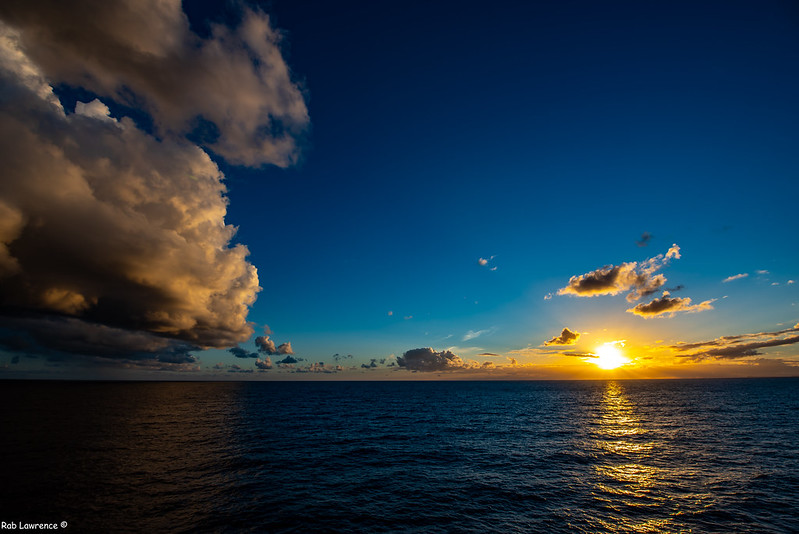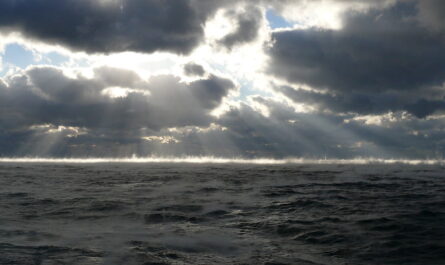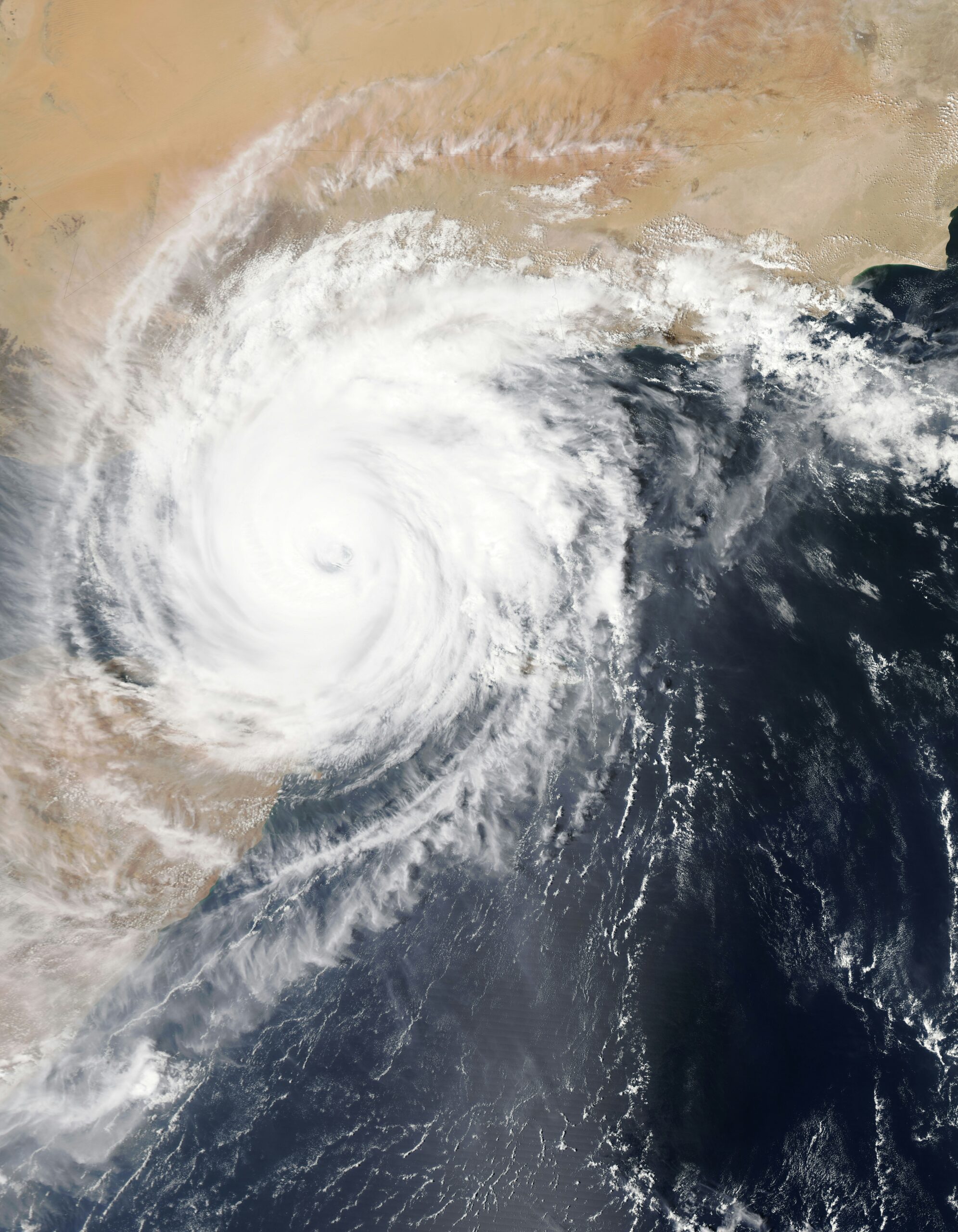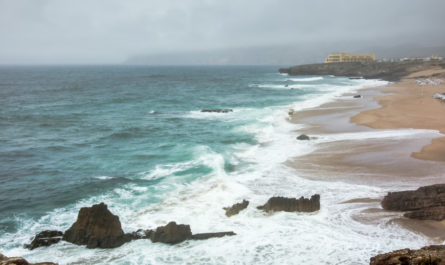The Atlantic Ocean is a vital regulator of the Earth’s climate, with its powerful currents driving atmospheric and oceanic systems that influence weather patterns, biodiversity, and human life. These currents, often referred to as the Atlantic Meridional Overturning Circulation (AMOC), play a crucial role in distributing heat, nutrients, and carbon dioxide across the globe.
This article provides an extensive exploration of the Atlantic’s ocean currents, their impact on global climate patterns, and the challenges they face in a rapidly changing world.
Understanding Atlantic Ocean Currents
1. What Are Ocean Currents?
Ocean currents are continuous, directed movements of seawater driven by various forces, including wind, Earth’s rotation, salinity, and temperature differences. In the Atlantic, these currents form a complex network of surface and deep-water flows.
2. The Atlantic Meridional Overturning Circulation (AMOC)
The AMOC is one of the most critical components of the Atlantic’s circulation system. It is a large system of ocean currents that transports warm water from the tropics to the North Atlantic and cold water from the Arctic to the south.
- Surface Currents: Include the Gulf Stream and North Atlantic Drift, which transport warm water northward.
- Deep Currents: Comprise the return flow of cold, dense water along the ocean floor, known as thermohaline circulation.
Key Atlantic Ocean Currents and Their Functions
1. The Gulf Stream
The Gulf Stream is a warm, fast-moving current originating in the Gulf of Mexico and flowing along the eastern coast of the United States before heading toward Europe.
- Role in Climate: Moderates temperatures in Eastern North America and Western Europe.
- Global Impact: Influences weather systems, including hurricane formation in the Atlantic.
2. The North Atlantic Drift
A continuation of the Gulf Stream, the North Atlantic Drift carries warm water into the higher latitudes of Europe.
- Role in Climate: Keeps Western Europe relatively mild, even during winter months.
- Impact on Agriculture: Supports agriculture in regions like the British Isles and Scandinavia by preventing severe frosts.
3. The Canary Current
This cold current flows southward along the western coast of Africa.
- Role in Climate: Creates arid conditions in the Sahara and influences marine biodiversity along the African coast.
- Fisheries: Supports one of the world’s most productive fishing zones.
4. The Labrador Current
This cold current flows southward along the eastern coast of Canada, interacting with the Gulf Stream.
- Role in Climate: Creates foggy conditions off Newfoundland and impacts ice coverage in the North Atlantic.
- Marine Ecosystems: Supports cold-water species and nutrient-rich waters.
The Science Behind Ocean Currents and Climate
1. Heat Transport
Atlantic currents move warm water from the tropics to the poles, regulating temperatures globally.
- Surface Warming: The Gulf Stream and North Atlantic Drift warm regions far from the equator, such as Western Europe.
- Polar Cooling: Deep currents carry cold water southward, balancing heat distribution.
2. Carbon Sequestration
The Atlantic plays a significant role in the global carbon cycle by absorbing carbon dioxide from the atmosphere.
- Biological Pump: Marine organisms capture carbon, which sinks to the ocean floor upon their death.
- Physical Pump: Cold water in the North Atlantic absorbs CO2 more efficiently, storing it in the deep ocean.
3. Nutrient Cycling
Currents distribute nutrients across the ocean, supporting marine ecosystems.
- Upwelling Zones: Currents like the Canary Current bring nutrient-rich water to the surface, fostering biodiversity.
- Global Fisheries: Many of the world’s major fisheries depend on these nutrient flows.
Global Climate Patterns Influenced by Atlantic Currents
1. Europe’s Mild Winters
The Gulf Stream and North Atlantic Drift ensure that Western Europe experiences milder winters than regions at similar latitudes, such as Canada.
2. Hurricane Formation in the Atlantic
Warm surface waters in the Atlantic act as fuel for hurricanes, with the Gulf Stream amplifying their intensity and longevity.
3. Droughts and Rainfall in Africa
The Canary Current and Atlantic Niño phenomenon influence rainfall patterns across West Africa, impacting agriculture and water resources.
4. El Niño and La Niña
While primarily associated with the Pacific Ocean, these phenomena are influenced by the Atlantic’s heat distribution, affecting weather patterns worldwide.
5. Arctic Ice Melt
Warm Atlantic currents contribute to the melting of Arctic sea ice, accelerating global sea level rise and altering weather patterns.
Challenges to Atlantic Ocean Currents
1. Climate Change
Rising global temperatures threaten the stability of the AMOC and other currents.
- Freshwater Influx: Melting ice in Greenland adds freshwater to the North Atlantic, disrupting salinity-driven circulation.
- Slowing Currents: Studies indicate that the AMOC is slowing, which could lead to significant climate disruptions.
2. Pollution
Plastic pollution and chemical runoff alter marine ecosystems and affect the physical properties of currents.
- Microplastics: Found in every layer of the ocean, they interfere with marine life and nutrient cycles.
- Chemical Impact: Pollutants like oil spills can alter water temperature and density.
3. Overfishing
Overfishing disrupts food webs, affecting species that contribute to nutrient cycling within currents.
The Future of Atlantic Currents and Climate
1. Potential Collapse of the AMOC
Scientists warn that continued global warming could cause the AMOC to collapse within the next century.
- Consequences: Drastic cooling in Europe, intensified hurricanes in the Americas, and disrupted monsoon patterns in Africa and Asia.
2. Innovations in Monitoring
Technological advancements are helping researchers monitor and predict changes in Atlantic currents.
- Satellites: Measure sea surface temperatures and currents in real-time.
- Argo Floats: Collect data on salinity, temperature, and currents at various depths.
- Supercomputers: Model complex ocean-atmosphere interactions for future predictions.
Solutions and Mitigation Strategies
1. Reducing Greenhouse Gas Emissions
Curbing emissions is essential to slow global warming and protect Atlantic currents.
- International Agreements: Policies like the Paris Agreement aim to limit temperature rise.
- Renewable Energy: Transitioning to clean energy reduces reliance on fossil fuels.
2. Marine Conservation
Protecting marine ecosystems ensures the health of currents and their associated processes.
- Marine Protected Areas (MPAs): Safeguard critical habitats and biodiversity.
- Sustainable Fishing: Prevents overexploitation of species vital to nutrient cycles.
3. Public Awareness and Education
Educating people about the importance of ocean currents fosters support for conservation efforts.
- Citizen Science: Encourages public involvement in data collection and monitoring.
- Outreach Programs: Highlight the role of Atlantic currents in everyday weather and food security.
Case Studies: Understanding the Impact
1. The 2004 Heatwave in Europe
A slowdown in the AMOC contributed to one of the worst heatwaves in Europe, resulting in over 70,000 deaths and significant economic losses.
2. Atlantic Hurricanes
Hurricanes like Katrina and Harvey were intensified by warm waters in the Gulf Stream, showcasing the interconnectedness of ocean currents and extreme weather events.
3. The Day After Tomorrow Scenario
While fictional, the movie’s depiction of an AMOC collapse highlights the catastrophic potential of disrupted currents.
Conclusion: Protecting the Pulse of the Planet
Atlantic ocean currents are the lifeblood of global climate systems, connecting continents and ecosystems in intricate ways. Their stability is vital not only for marine biodiversity but also for human societies that rely on predictable weather patterns, food supplies, and coastal protection.
As we confront the challenges of climate change and environmental degradation, understanding and protecting these currents is paramount. Through science, innovation, and collective action, we can ensure that the Atlantic continues to shape our climate in a way that supports life for generations to come.



